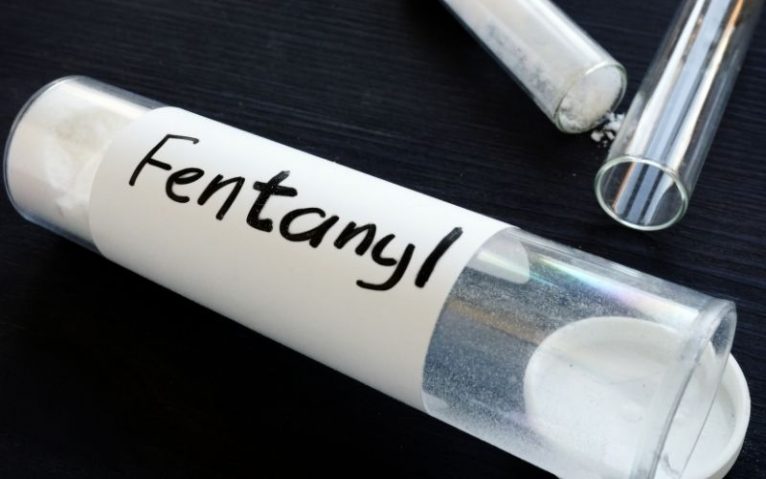A popular prescription opioid approved for treating chronic pain, especially after surgery or patients managing cancer pain. Fentanyl is a synthetic opioid similar in chemistry to morphine, but it’s 50 to 100 times more potent. However, due to its heroin-like effects, fentanyl has found its way to the streets, and it’s being mixed with other substances like cocaine or heroin to increase its euphoric effects. Rates of overdose deaths involving synthetic opioids were nearly 19 times higher in 2019 than in 2013. More than 36,000 died from overdoses involving opioids in 2019. Pharmaceutical fentanyl is sold under the brands Actiq, Duragesic, and Sublimaze. On the streets, fentanyl goes for names like apache, china girl, china white, goodfella, TNT, and dance fever, to name a few. Today, fentanyl is one of the most common drugs involved in drug overdose deaths in the United States. The CDC suggests that provisional drug overdose death counts through may 2020 mean a rapid acceleration of drug overdose deaths (81,230 cases) during the COVID-19 pandemic. Most of which involved some form of prescription pain relievers, including fentanyl and other opioids.
How Do People Use Fentanyl?
It is available with a shot, fentanyl patches, or tablets sucked like cough drops through a prescription. On the flip side, illegal fentanyl is sold as a powder, dropped onto blotter paper, put in eye droppers and nasal sprays, or compressed into pills that look like other opioid medications. Many drug dealers combine it with illicit drugs like heroin, cocaine, methamphetamine, and MDMA. They do this to produce a more intense high while also diluting fentanyl, making it cheaper to make. However, this is a particularly risky option because not everyone knows the fentanyl they’re taking contains other drugs.
Can Fentanyl Use Lead to Addiction?
Absolutely. Fentanyl is a highly addictive substance due to its potency – 50-100 times stronger than morphine. Even someone taking fentanyl with a prescription can develop a dependence, characterized by withdrawal symptoms when they stop taking the drug. While fentanyl affects everyone differently, most people will experience these effects:
- Euphoria
- Relief from pain
- Nausea and vomiting
- Reduced appetite
- Cramps
- Weakness or fatigue
- Dizziness
Sometimes it can be challenging to recognize the signs of addiction in yourself or someone you know. The most common signs and symptoms of addiction include:
- Appearing lethargic at times, feeling heavier limbs, and not being able to speak clearly.
- Taking the medication other than as prescribed, including taking larger amounts or tampering with the drug to snort it or dilute it in eye drops.
- Engaging in risky behaviors to get more drugs, such as stealing money, doctor shopping, or getting drugs off the streets.
- Becoming more and more secretive with your actions and activities to try to hide your addiction from others.
- Experiencing drastic changes in appearance, such as losing weight or a poorly maintained appearance.
- Experiencing withdrawal symptoms like nausea, shakiness, and muscle aches when you wait longer in-between doses or you try to quit fentanyl.
[interact id=”5fbc328646b5620016cea0d2″ type=”quiz” mobile=”false”]
Can You Overdose?
Yes, opioids carry a risk for overdose. An overdose happens when a drug produces severe side effects and life-threatening symptoms. When people overdose on fentanyl, the most common overdose symptom is respiratory depression or slow breathing that can suddenly stop. This decreases the amount of oxygen that reaches the brain, a condition called hypoxia. Hypoxia can lead to a coma, permanent brain damage, and even death in some cases.
Opioid Overdose Treatment
When someone overdoses fentanyl with other drugs, it’s challenging to know which drug is causing the overdose. In most cases, naloxone is the medication used to treat overdose as it works by rapidly binding to opioid receptors and reversing the effects of the drug. However, fentanyl is more potent than other opioid drugs, so people might need multiple doses of naloxone to reverse an overdose. If you suspect someone has overdosed, call 911 and try to get immediate medical attention. Once medical personnel arrives, they will administer naloxone and most likely transport them to an emergency room at a nearby hospital.
[button link=”https://app.popt.in/landing/9905a874f6e88″ type=”big” newwindow=”yes”] FREE GUIDE: How to Administer Naloxone[/button]
Addiction Treatment
If you or someone you know is struggling with fentanyl addiction, please know that treatment is available. A combination of medication and behavioral therapies can be effective at treating fentanyl addiction. While treatment will vary from person to person, it will include one or more of these treatment services in most cases.
- Opioid detox: because fentanyl produces life-threatening withdrawal symptoms, it’s not advisable to try to quit on your own. A medical detox program can help you taper off the drug gradually and manage withdrawal symptoms to help you remain comfortable and stable throughout the process.
- Medication-assisted treatment: in addition to detox, buprenorphine and methadone bind to the same receptors in the brain as fentanyl. These medications prevent fentanyl from affecting the brain.
- Psychotherapy: behavioral therapies for opioid addiction can help people modify their behaviors related to drug use. Cognitive-behavioral therapy, contingency management, and motivational interviewing are all common practices used in fentanyl addiction treatment.
At Lighthouse Recovery Institute, our drug addiction center specialized in opioid addiction treatment. Call us at 866-308-2090 today to learn more about our admission process and start your journey toward recovery.









